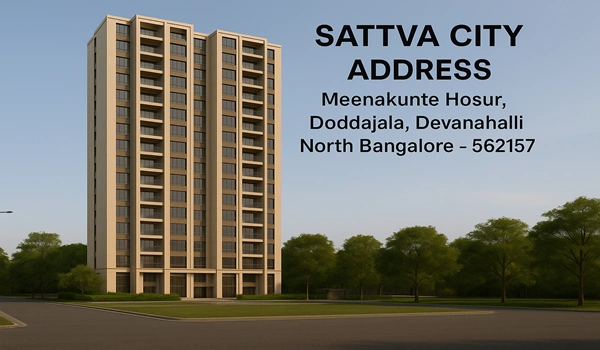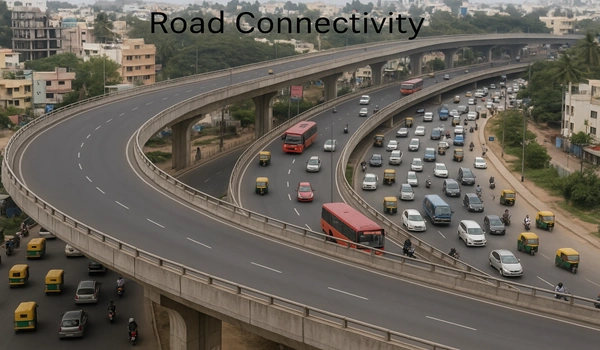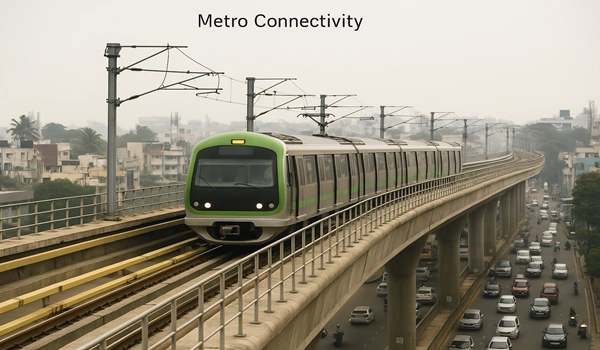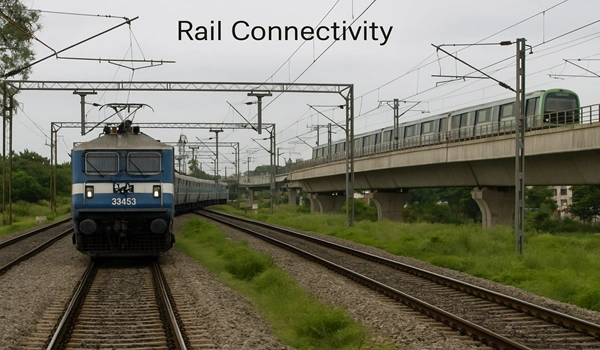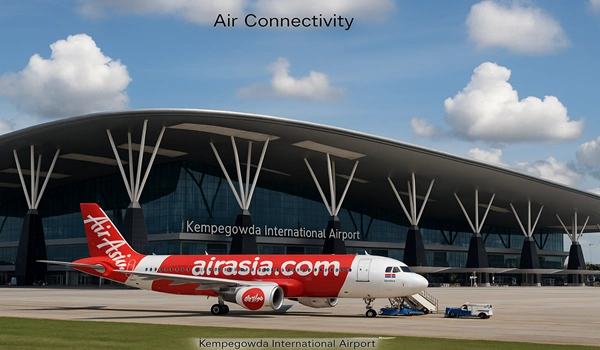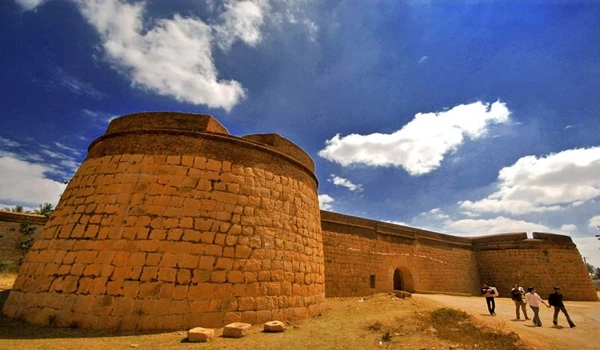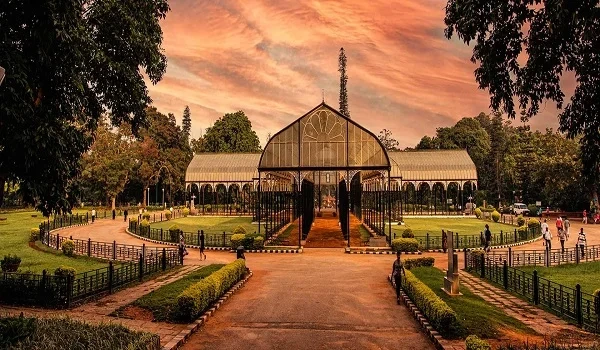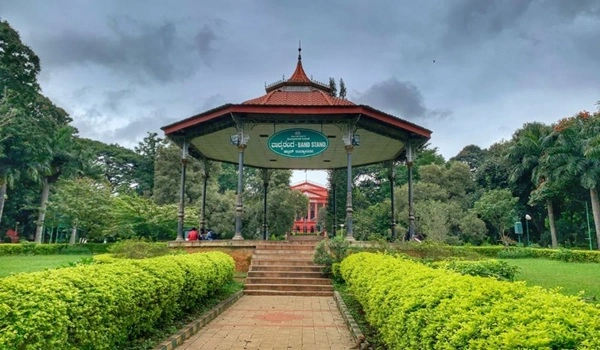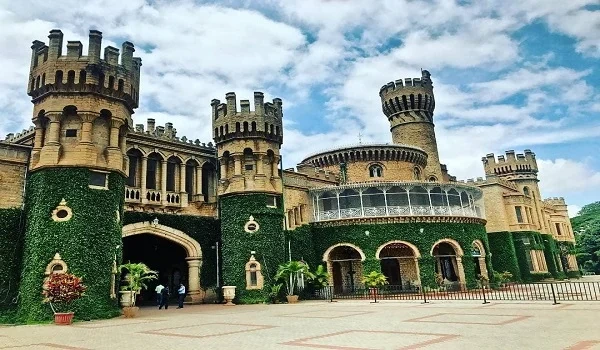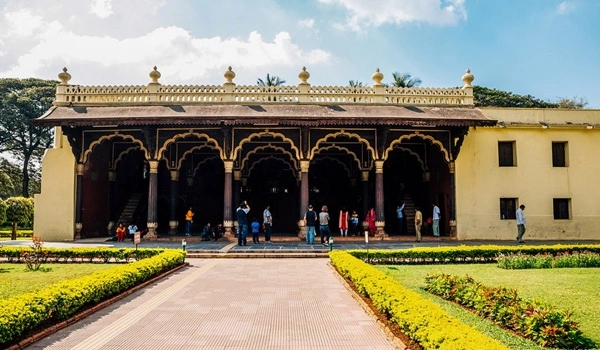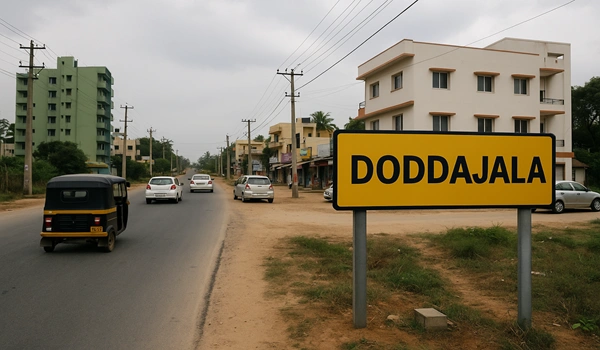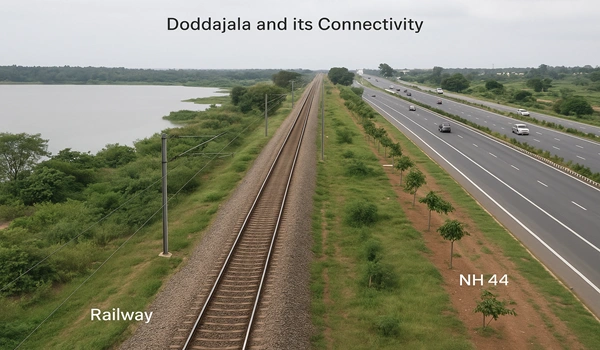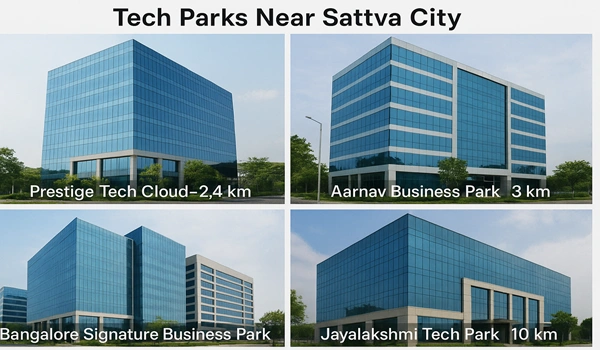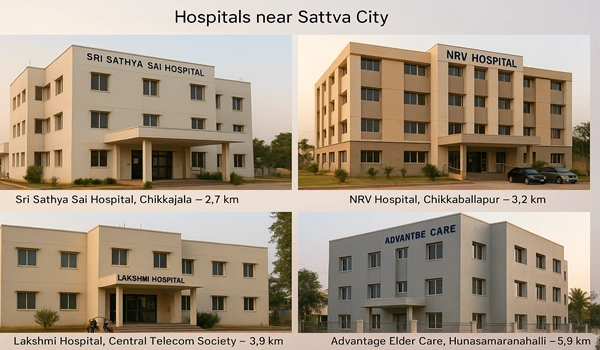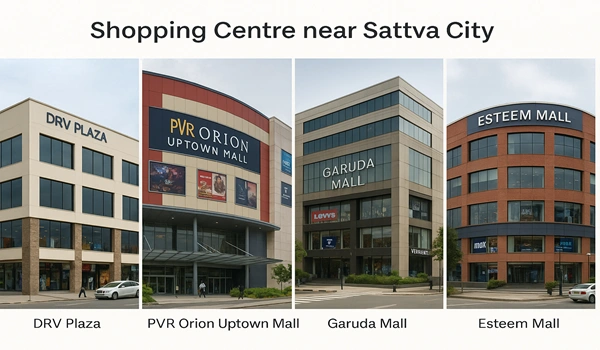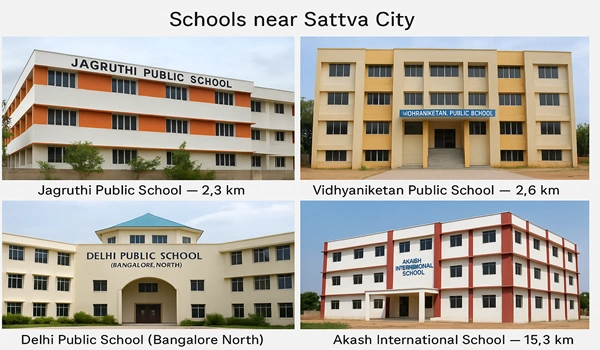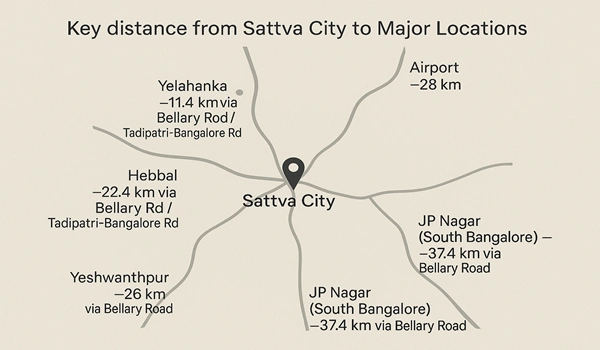 Meenakunte Hosur, Doddajala,
Meenakunte Hosur, Doddajala, Sattva City is strategically located at Meenakunte Hosur, Doddajala, North Bangalore, Karnataka – 562157, right before the Devanahalli airport toll. Nestled near the scenic Doddajala Lake, the project lies just off Devanahalli in a prime growth corridor of North Bangalore.
Location plays a great role as it determines connectivity, accessibility, and convenience for daily living. A well-chosen location enhances lifestyle, ensures better returns on investment, and provides long-term growth opportunities.
Sattva City Address is Meenakunte Hosur, Doddajala, Devanahalli, North Bangalore – 562157. This sought-after location offers unmatched connectivity, making it one of the most desirable residential destinations in Bangalore. Its closeness to Kempegowda International Airport and access to major highways further enhance its appeal.
Doddajala has a strong road network with multiple highways and arterial roads. Frequent BMTC bus services and taxis make daily travel smooth and hassle-free.
Nearest Bus Stop:
The project is close to the Blue Line of Namma Metro, providing an efficient transport option for residents to reach core city areas without traffic delays.
Nearest Metro Station:
Residents of Sattva City have quick access to railway services, making intercity travel easy and convenient.
Nearest Railway Station:
The project’s prime location offers excellent air connectivity. The Kempegowda International Airport can be accessed via NH-44 in just about 13 minutes, with relatively lighter traffic compared to other approaches.
Nearest Airport:
Devanahalli Fort is one of the most prominent historical landmarks near Sattva City. Originally built in 1501 by Mallabairegowda, a local chieftain under the Saluva Dynasty, the fort was later rebuilt in the 18th century by Hyder Ali using stone and lime. The fort covers around 20 acres and is surrounded by strong defensive walls with 12 semi-circular bastions.
Inside the fort, visitors can still see remnants of old temples such as the Venugopalaswamy Temple, which is known for its fine carvings. The birthplace of Tipu Sultan, one of India’s legendary rulers and freedom fighters, lies just outside the fort walls, marked with a memorial stone.
Sprawling across 240 acres, Lalbagh is a lush green paradise established during the reign of Hyder Ali in 1760 and later expanded by Tipu Sultan. It is globally renowned for its rare collection of tropical and subtropical plants, some of which are over 100 years old.
The Glass House, inspired by London’s Crystal Palace, is the central attraction and hosts the famous bi-annual flower shows on Republic Day (January) and Independence Day (August), drawing thousands of visitors. Lalbagh also boasts a rock formation estimated to be 3,000 million years old, considered one of the oldest geological formations on Earth.
Cubbon Park, spread over 300 acres, is one of Bangalore’s green lungs and a hub for recreation and relaxation. Established in 1870 by Major General Richard Sankey, the park is named after renowned Sir Mark Cubbon, the longest-serving commissioner of Mysore.
The park is dotted with over 6,000 species of plants and trees, including exotic and indigenous varieties. The park also houses several cultural and historical landmarks, such as:
The sprawling lawns, musical fountains, and shaded pathways make Cubbon Park an essential retreat for both locals and tourists.
The Bangalore Palace, an architectural masterpiece, was built in 1878 by the Wadiyar dynasty. Initially purchased by the British guardian of Maharaja Chamarajendra Wadiyar, Rev. J. Garrett, the palace was later renovated into a Tudor-style fortress.
Covering 45,000 sq. ft., the palace boasts elegant wooden carvings, floral motifs, stained glass, and Victorian-style furniture. Its sprawling grounds were once used for royal gatherings and today host concerts, exhibitions, and cultural events. The palace interior includes grand ballrooms, courtyards, and a collection of royal photographs and paintings that depict Bangalore’s regal past.
Built entirely from teakwood, Tipu Sultan’s Summer Palace is an excellent example of Indo-Islamic architecture. Originally started by Hyder Ali, it was completed by Tipu Sultan in 1791. The palace has two stories with intricately carved wooden pillars, arches, balconies, and floral motifs.
It served as Tipu Sultan’s summer retreat and court, where he conducted state affairs. The palace walls are adorned with faded murals depicting battles and floral artwork. Today, it also houses a small museum displaying Tipu Sultan’s belongings, including his clothes, crown, weapons, and sketches.
Doddajala has emerged as one of the most promising real estate hubs in Bangalore, especially after the inauguration of the Kempegowda International Airport. Its close proximity to the airport has accelerated both residential and commercial development, making it a hotspot for investors and homebuyers alike.
The region is witnessing a surge in social infrastructure, with the establishment of new schools, healthcare facilities, retail outlets, and hospitality projects. Additionally, several tech parks and business hubs are planned around the Devanahalli–Doddajala belt, further fueling demand for housing.
The widening of arterial roads and ongoing infrastructure upgrades have boosted property prices in recent years, signaling excellent returns on investment. For anyone seeking long-term growth and convenience, Doddajala presents itself as an ideal destination. With property prices steadily increasing and infrastructure projects underway, Doddajala is considered one of the top real estate investment zones in Bangalore.
Doddajala’s biggest advantage lies in its excellent connectivity to Bangalore city and beyond. Major highways and arterial roads pass through the region, ensuring seamless travel. The upcoming Satellite Town Ring Road (STRR) will further link Doddajala to surrounding towns and suburbs, easing traffic congestion and improving access.
The area also benefits from Namma Metro’s Blue Line, which is set to transform commuting by offering hassle-free connections to core business districts. In addition, the presence of nearby railway stations and easy access to Kempegowda Airport make it one of the best-connected zones in North Bangalore.
Doddajala is well-linked through multiple prime roads and highways, making daily commuting and intercity travel extremely convenient. Major roadways include:
With ongoing expansions and flyovers, road travel is set to become even smoother in the coming years.
Doddajala benefits from its proximity to the Namma Metro Blue Line, which will provide efficient and eco-friendly transport to key areas of Bangalore. The planned Doddajala Metro Station is expected to boost real estate demand further, as metro connectivity significantly reduces travel time to IT hubs, business parks, and the city center. Once operational, the metro will also link Doddajala seamlessly to KR Puram, Hebbal, and Majestic, making it highly attractive for working professionals.
One of the strongest advantages of Doddajala is its closeness to Kempegowda International Airport, which can be reached within 10–15 minutes via taxi or BMTC airport shuttle services. Frequent flyers, business travelers, and NRIs find this location highly convenient.
The Suburban Rail project and the proposed Airport Express Metro Line will further enhance connectivity, making Doddajala one of the most future-ready neighborhoods in North Bangalore.
